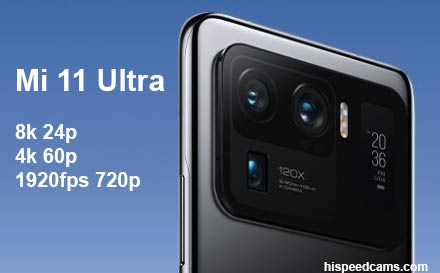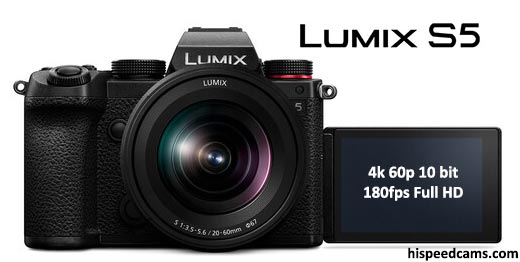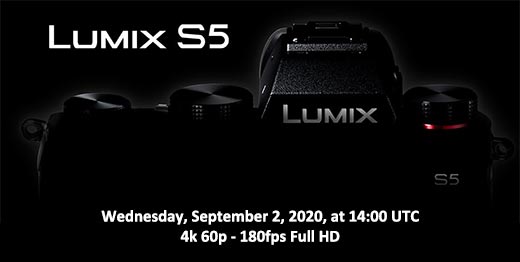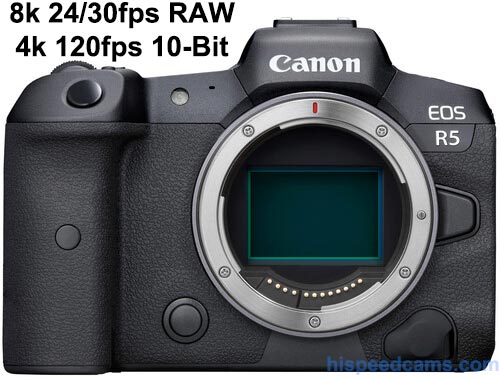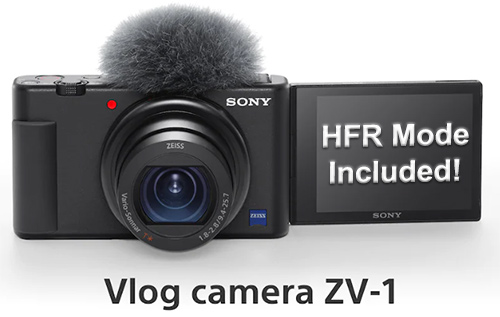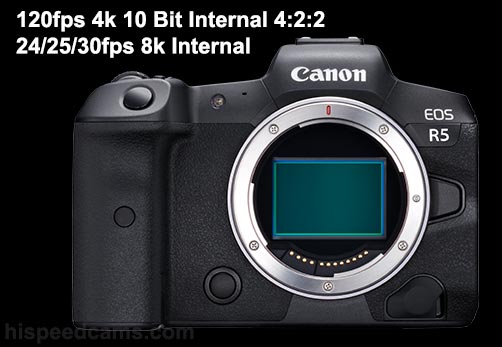Sony has revealed the ZV-1 Vlogging camera which uses the tried and true technology of the RX100 series and simplifies the body controls plus allows the screen to be of the vari-angle kind to work essentially as a do it all solution for web Vlogs. The body is reminiscent of the latest RX100 VII and very close to the previous generations but with the added benefit of a real video-oriented 360-degree screen.
As an RX Camera it features our favorite slow motion mode of the compact camera world, the Motion Eye or HFR Sony mode which offers up to 1000fps on sub HD resolution at capture time and near 1080p at 240fps with excellent quality. We dive into the camera’s slow motion mode to see if anything has improved from the RX line and if this camera with it’s lower entry price makes more sense to own than the RX100 line.
Sony ZV-1 Main Specs:
- SENSOR TYPE: 1.0″-type (0.52″ x 0.35″) Exmor RS® CMOS sensor, aspect ratio 3:2 Stacked!
- NUMBER OF PIXELS (EFFECTIVE)Approx. 20.1 Megapixels
- OPTICAL ZOOM2.7x
- F-NUMBER (MAXIMUM APERTURE)F1.8 (W) – 2.8 (T)
- FOCAL LENGTH (F=)f = 9.4–25.7 mm
- Eye AF & Object tracking AF
- 315 points (phase-detection AF), 425 points (contrast-detection AF)
- Vari angle touch screen
- Directional three-capsule mic with wind screen
- Optical SteadyShot
Sony ZV-1 Video Modes:
MOVIE RECORDING MODE (NTSC)
AVCHD: 24 M FX (1,920 x 1,080/60i) / 17 M FH(1,920 x 1,080/60i), XAVC S 4K: 30p 100 M (3,840 x 2,160/30p) / 30p 60 M (3,840 x 2,160/30p) / 24p 100 M (3,840 x 2,160/24p) / 24p 60 M (3,840 x 2,160/24p),
XAV C S HD: 60p 50 M (1,920 x 1,080/60p) / 60p 25 M (1,920 x 1,080/60p) / 30p 50 M (1,920 x 1,080/30p) / 30p 16 M (1,920 x 1,080/30p) / 24p 50 M (1,920 x 1,080/24p) / 120p 100 M (1,920 x 1,080/120p) / 120p 60 M (1,920 x 1,080/120p)
MOVIE RECORDING MODE (PAL)
AVCHD: 24 M FX (1,920 x 1,080/50i) / 17 M FH (1,920 x 1,080/50i), XAVC S 4K: 25p 100 M (3,840 x 2,160/25p) / 25p 60 M (3,840 x 2,160/25p),
XAVC S HD: 50p 50 M (1,920 x 1,080/50p) / 50p 25 M (1,920 x 1,080/50p) / 25p 50 M (1,920 x 1,080/25p) / 25p 16 M (1,920 x 1,080/25p) / 100p 100 M (1,920 x 1,080/100p) / 100p 60 M (1,920 x 1,080/100p)
Sony ZV-1 Slow Motion HFR Video Modes:
HFRRecording:
[PAL] mode
XAVC S
- Full HD: 50p 50 M (1,920 x 1,080/250fps)
- 50p 50 M (1,920 x 1,080/500fps)
- 50p 50 M (1,920 x 1,080/1,000fps)
- 25p 50 M (1,920 x 1,080/250fps)
- 25p 50 M (1,920 x 1,080/500fps)
- 25p 50 M (1,920 x 1,080/1,000fps)
[NTSC] mode
XAVC S HD:
- 60p 50 M (1,920 x 1,080/240fps)
- 60p 50 M (1,920 x 1,080/480fps)
- 60p 50 M (1,920 x 1,080/960fps)
- 30p 50 M (1,920 x 1,080/240fps)
- 30p 50 M (1,920 x 1,080/480fps)
- 30p 50 M (1,920 x 1,080/960fps)
- 24p 50 M (1,920 x 1,080/240fps)
- 24p 50 M (1,920 x 1,080/480fps)
- 24p 50 M (1,920 x 1,080/960fps)
Sensor Readout Number of effective pixels:
Quality Priority – 2 second rec time: 240fps/250fps (1,824 x 1,026),
Quality Priority – 1 second rec time:480fps/500fps (1,824 x 616) 960fps/1,000fps (1,244 x 420)/
Shoot Time Priority – 3 second rec time: 240fps/250fps (1,824 x 616), 480fps/500fps (1,292 x 436), 960fps/1,000fps (912 x 308)
Has anything changed in HFR?
In a word no when it comes to resolutions, the same HFR that debuted years ago is still here as it is using the same stacked 1″ EXMOR sensor from the RX100 line of cameras and the latest version at that with the new AF module. Other than that it is essentially a cheaper RX series in terms of capture modes without sacrificing video quality. In fact video wise it does better in auto exposure modes and it is tuned to better preserve highlights while popping up skin tones which may be more pleasant for many.
You can check the official HFR Manual online here for the ZV-1!
However, when it comes to recording time it is a notch below the RX100 and RX10 series with a maximum recording time of 3 seconds on Shoot time priority and a low of 1 second for Quality priority on frame rates above 240fps. (Thanks to reader Klaus for bringing this to our attention). This is a big deal as previous RX releases allow up to 7 seconds on SHoot time priority and 4 seconds on Quality priority. So your capture will be severely limited time wise.
All in all an RX series for HFR mode compacted under $800 USD with some features added and some hardware controls removed. What is not to like when you get essentially the same performance video-wise to a significantly costlier camera except for the recording time in HFR being so limited.
Video sample at 250fps and 500fps below:
Sony ZV-1 slow motion tests by Mark Wilson (Well done Mark!):
What is missing from the RX100 Line?
Thre are a few things that are absent which may or may not bother you.
- No multi-function ring on the lens barrel
- No EVF, only the Touch LCD Screen
- No Manual focus just Touch 2 focus!
- Lower recording times in HFR Mode but at same quality.
The lack of the EVF might be the toughest pill to swallow but as a Vlogging camera, it was bound to happen. The RX line is still relevant with it’s more well-rounded features however software-wise the video Auto modes on this camera are ideal for its intended blogging purpose with excellent auto exposure, amazing built-in microphone, and AF that really captures faces and object demos in real-time with almost no lag.
Is a new RX camera coming in 2020?
The rumor mill had been quiet on this front until the ZV-1 launch was coming which probably tells us that the RX line is either migrating or will get a debut with a whole new platform of sensor and lens design for the future. With P&S cameras being less and less relevant every day, Sony has been forced to cater to Vloggers and kind of side step camera enthusiasts that want pocketable options. However, the excellent RX100 and RX10 lines are still out there as options until a replacement is announced.
We have not heard any rumors about an RX100 version 8 camera so it is safe to say that we may not see one soon. If we do, it may be closer to Christmas time in any case.
The ZV-1 is recycling the best of the RX100 line and gearing it to Vloggers in a way that won’t break the bank, and at that, it is a real winner for your money considering how capable it is.
Should I get it?
Yes but…
If you already have an RX100 or RX10 camera we think you should skip this camera unless you want to Vlog and want a vari-angle screen and need higher recording times in slow motion. If you were thinking about getting an RX camera and you do not need an EVF and multifunction ring or the extra rec time then this is the camera to get for a significant price drop without sacrificing image quality.
Pricing and Availability:
The camera will be released on June 11th, 2020 in just a few days and you can pre-order at Amazon below!
There is a Vlogger accessory kit bundle for $100 more which has the Wireless Bluetooth Grip which lets you record and zoom from the controller as well as use it as a tripod. We believe that for $848 it’s very fair value as it also bundles a 64GB SD card. However, we recommend the RX100 line for slow motion enthusiasts due to the higher recording time as the ZV-1 is quite limited above 240fps.
This ZV-1 Camera may become our favorite Sony HFR camera since it ticks almost all the boxes at an affordable price. If you are getting one, it will help us if you click our Amazon links before ordering to help this site continue. Thanks for your support! -HSC
amzn_assoc_placement = "adunit0";
amzn_assoc_search_bar = "true";
amzn_assoc_tracking_id = "hispeedcams-20";
amzn_assoc_ad_mode = "manual";
amzn_assoc_ad_type = "smart";
amzn_assoc_marketplace = "amazon";
amzn_assoc_region = "US";
amzn_assoc_title = "Sony Cameras at Amazon";
amzn_assoc_asins = "B08965JV8D,B01LYFHMOB,B07DKG29RG,B07VPQV7BY";
amzn_assoc_linkid = "dca6b04400b6f472bffb15bccbcae8a4";
→ Continue Reading Full Post ←

